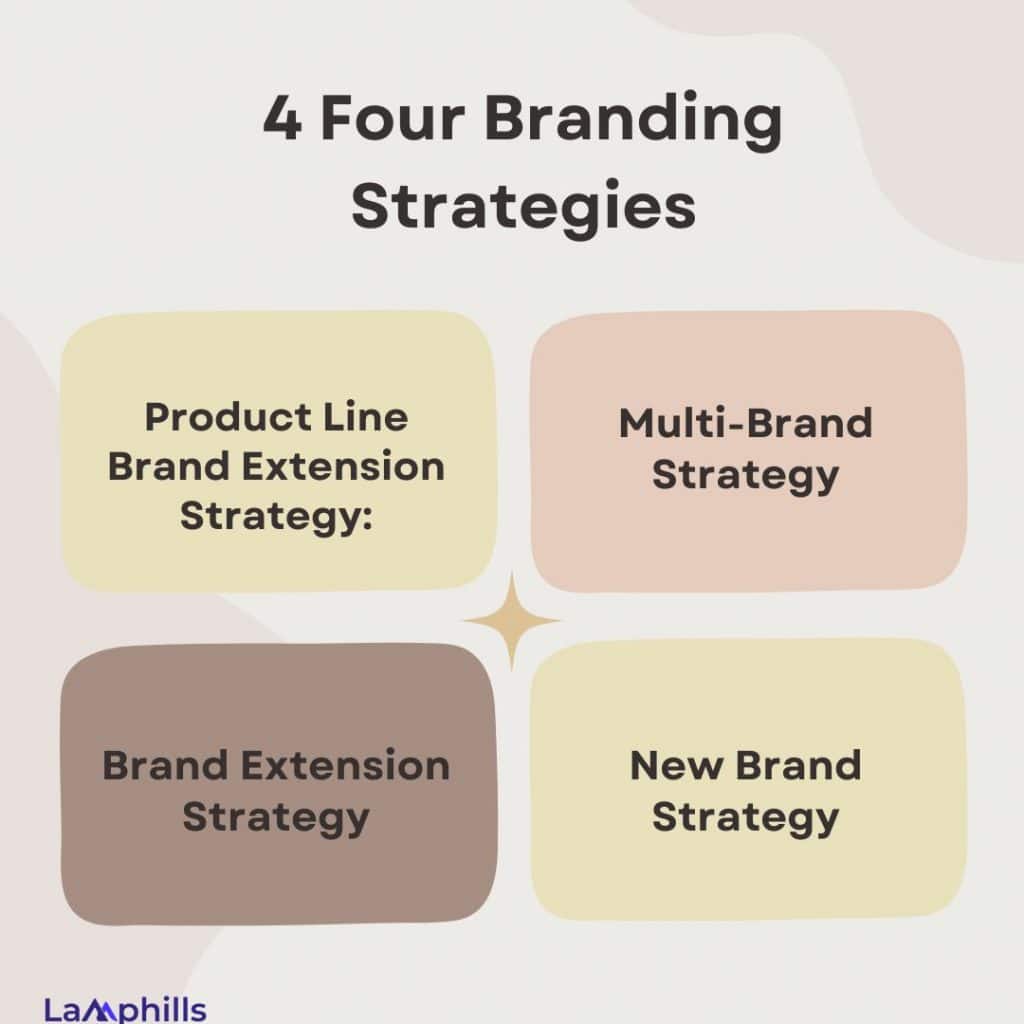Having a solid brand strategy is essential for standing out in a crowded market. With countless options, customers need a reason to choose your brand over others. A clear and effective brand strategy is the key to building that trust and loyalty. But creating one can be overwhelming. That’s where a brand strategy template comes in handy.
These templates simplify the process, giving you a structured path to follow. In this article, I will help you discover eight customizable brand strategy template options. You’ll also learn how to create an effective strategy that truly reflects your brand’s identity. Dive in to find out how these tools can elevate your brand and make a lasting impression.
Key Takeaways
- Your brand’s visual elements—like logos, colors, and typography—are just as important as the words you use.
- A good template will guide you in identifying your ideal customer—demographics, lifestyle, needs, and preferences.
- A personal brand strategy template helps you map out each step, from identifying your current standing to defining your future goals.
- By having a clear strategy, you’re more likely to create a brand that resonates with your audience and grows steadily over time.
- A good brand strategy is adaptable. It evolves with changing trends without losing its essence.
Brand Strategy Template
A brand strategy is like the backbone of your business identity. It’s a clear, long-term plan that shows how you want your brand to be recognized, what it stands for, and how it will stand out in the market. When you think of a well-known brand, what comes to mind isn’t just their product but how they present themselves, their values, and how they communicate. That’s the essence of brand strategy—it’s about shaping how your customers see you and making sure that perception is consistent and meaningful.
For instance, consider a small local bakery. If the bakery’s brand strategy emphasizes using organic ingredients and promoting a friendly, neighborhood vibe, that will draw in customers who value these things. It’s not just about selling bread and pastries; it’s about selling an experience and a set of values that people connect with.
What is a Brand Strategy Template?
A brand strategy template is a tool that helps you put all these elements together. Think of it as a structured guide that makes it easier to define what your brand stands for and how it should communicate with the world. These templates often come with prompts and sections for key elements like your brand’s mission, vision, target audience, and unique selling points. They’re designed to simplify the process of building a brand strategy by giving you a clear framework within which to work.
What Makes a Good Brand Strategy Template?
- Brand Identity: A solid brand strategy template will help you define your core brand identity. This includes your mission (why your brand exists), vision (where you want to go), and values (what you stand for). For instance, if your brand is centered on eco-friendly products, your mission might focus on sustainability, and your vision could be to lead in the green product market.
- Identifying Your Target Audience: Understanding who you’re speaking to is crucial. A good template will guide you in identifying your ideal customer—demographics, lifestyle, needs, and preferences. If you’re a fitness brand targeting young professionals, the template might prompt you to think about what motivates this group, how they spend their time, and where they’re most likely to encounter your brand.
- Highlighting Your Brand’s Unique Differentiators: This is about pinpointing what makes you different from your competitors. A strong template will help you clearly define your unique selling proposition (USP). For example, if your USP is high-quality, hand-crafted goods, the template will encourage you to emphasize this aspect in your messaging and visual identity.
- Consistent Messaging and Voice: Consistency in how you talk to your audience is key. A good template will include prompts to help you define your brand’s voice and tone. Whether your brand is formal, casual, or quirky, having this spelled out ensures your communication aligns with your brand’s personality.
- Cohesive Visual Identity: Your brand’s visual elements—like logos, colors, and typography—are just as important as the words you use. A comprehensive template will guide you in creating a visual identity that supports your overall brand strategy. For instance, a luxury brand might opt for sleek, minimalist designs, while a playful, family-oriented brand might choose bright, cheerful colors and fun fonts.
The Value of Using a Brand Strategy Template
Taking the time to fill out a brand strategy template can save you a lot of effort down the road. It helps you make informed decisions about everything from the copy on your website to the colors in your logo. By having a clear strategy, you’re more likely to create a brand that resonates with your audience and grows steadily over time. This is not just about having a plan; it’s about having the right plan that aligns with your business goals and connects with your customers.
Developing a brand strategy is about creating a clear and consistent narrative that resonates with your audience. Below are eight essential brand strategy templates that will help you shape that narrative effectively.
#1. Brand Strategy Planning Template
This template helps you map out your brand’s core elements, such as mission, vision, and values. It provides a structured approach to defining what your brand stands for and how it should be perceived in the market.
#2. Brand Strategy Roadmap Template
The brand strategy roadmap template is your blueprint for brand development. It outlines the steps needed to achieve your branding goals, from initial concept to execution. This template ensures that your brand strategy is aligned with your business objectives and market opportunities.
#3. Brand Persona Worksheet
Understanding your audience is crucial. The brand persona worksheet guides you through the process of defining your target audience. It helps you create detailed profiles that represent your ideal customers, focusing on their needs, preferences, and behaviors.
#4. Brand Strategy Brainstorming Worksheet
This template is all about generating ideas. The brand strategy brainstorming worksheet encourages creative thinking and collaboration. It’s designed to help you explore different branding concepts, messaging, and positioning strategies in a structured way.
#5. Brand Communications Strategy Example
Effective communication is key to a strong brand. The brand communications strategy example offers a framework for crafting your brand’s messaging. It covers everything from tone of voice to key messaging points, ensuring that your communication is consistent across all channels.
#6. Brand Strategy Research Interview Worksheet
To build a brand that resonates, you need to understand your market. The brand strategy research interview worksheet helps you gather insights from interviews with stakeholders, customers, and industry experts. It’s a tool that ensures your strategy is grounded in real-world data and perspectives.
#7. Brand Positioning Strategy Template
Positioning your brand in the market is essential for standing out from the competition. The brand positioning strategy template helps you define your unique value proposition and competitive advantages. It’s a guide to ensuring your brand occupies the right space in your customers’ minds.
#8. Brand Voice Template
Your brand’s voice is how you communicate with your audience. The brand voice template helps you define this voice, ensuring it’s consistent and aligned with your brand’s personality. Whether your tone is professional, friendly, or playful, this template ensures that your communication reflects your brand’s identity.
How to Create an Effective Strategy For Your Brand
Let’s dive deeper into each step to give you a clearer picture of how to create an effective brand strategy.
#1. Understand Your Brand’s Core Identity
Your brand’s core identity is the foundation of everything you do. It’s not just about having a catchy name or a cool logo. It’s about deeply understanding what your brand represents. Ask yourself:
- Values: What principles guide your brand? These values should reflect what’s important to you and resonate with your audience. For example, if sustainability is a core value, this should be evident in your products, messaging, and actions.
- Mission: What is the purpose of your brand? Your mission should explain why your brand exists beyond just making money. It could be solving a specific problem, fulfilling a need, or making the world a better place in some way.
- Vision: Where do you see your brand in the future? Your vision is your long-term goal. It’s the big-picture thinking that drives your strategy and decisions.
When these elements are clear and aligned, your brand will feel more authentic. Authenticity is key because it builds trust with your audience. People are more likely to support a brand that stands for something meaningful and genuine.
#2. Know Your Audience Inside Out
Understanding your audience goes beyond basic demographics. You need to get into their heads and understand their motivations, pain points, and desires. This requires research and empathy. Consider:
- Demographics: Age, gender, income, education level, and location are starting points. But don’t stop here.
- Psychographics: What are their interests, values, and lifestyle choices? What drives them to make decisions? What are their aspirations?
- Behavior: How do they interact with brands? Are they loyal to certain brands, or do they switch based on trends? What channels do they use to gather information or make purchases?
Tools like surveys, interviews, social media insights, and customer feedback can help you gather this information. The more you know about your audience, the better you can tailor your strategy to meet their needs.
#3. Define Your Brand’s Positioning
Brand positioning is about differentiating yourself in the market. It’s the unique spot your brand occupies in the minds of your customers. To define your positioning:
- Identify Your Unique Selling Proposition (USP): What makes your brand different? It could be a unique feature, superior quality, exceptional service, or a specific niche you serve. For example, if you’re a coffee brand, is your USP organic beans, fair-trade practices, or a unique brewing process?
- Competitive Analysis: Look at your competitors and see how they position themselves. Identify gaps in the market that your brand can fill. Your goal is to stand out, not blend in.
- Craft a Positioning Statement: This is a concise description of how you want your brand to be perceived by your target audience. It should clearly communicate your USP and why customers should choose you.
#4. Craft a Consistent Message
Consistency in messaging builds recognition and trust. Your message should be:
- Clear: Avoid jargon or overly complex language. Your audience should immediately understand what you’re about.
- Aligned with Your Brand Identity: Every message should reflect your brand’s values, mission, and vision. If your brand is about innovation, your messaging should convey forward-thinking ideas.
- Tailored to Your Audience: Speak the language of your audience. If you’re targeting a younger demographic, your tone might be more casual and playful. For a more professional audience, a formal tone might be more appropriate.
- Reinforced Across All Channels: Whether it’s on your website, social media, or in person, your message should be consistent. This helps in creating a cohesive brand image.
#5. Develop a Visual Identity
Your visual identity is often the first thing people notice about your brand. It includes:
- Logo: Your logo should be simple, memorable, and reflective of your brand’s personality. A well-designed logo can become a powerful symbol of your brand.
- Color Palette: Colors evoke emotions and convey meanings. Choose colors that align with your brand’s values and the feelings you want to evoke in your audience. For instance, blue often conveys trust and professionalism, while green is associated with sustainability and health.
- Typography: The fonts you choose should be legible and in line with your brand’s tone. A tech company might use sleek, modern fonts, while a children’s brand might use playful, rounded fonts.
- Imagery and Graphics: The style of photos, illustrations, and graphics you use should consistently reflect your brand’s identity. If your brand is about luxury, your imagery should feel premium and high-end.
#6. Choose the Right Channels
Not all channels are created equal, and where you spend your time and resources matters. To choose the right channels:
- Understand Your Audience’s Habits: Where does your audience hang out online? Are they more active on Instagram, LinkedIn, or YouTube? Knowing this helps you focus your efforts where they’ll have the most impact.
- Consider the Nature of the Channel: Different channels serve different purposes. Social media is great for engagement and building relationships, while your website is the hub for information and conversions. Email is personal and direct, while events can create meaningful in-person interactions.
- Tailor Your Content to the Channel: Content that works on one platform may not work on another. For example, Instagram is visual, so high-quality images and short videos work well. LinkedIn, on the other hand, is more professional and text-driven.
#7. Engage and Interact
Engagement is about more than just pushing out content. It’s about building a community around your brand. To foster engagement:
- Be Responsive: Answer questions, respond to comments, and acknowledge feedback. This shows that you value your audience and are attentive to their needs.
- Encourage User-Generated Content: Invite your audience to share their experiences with your brand. This not only builds community but also provides authentic content that others can relate to.
- Create Value: Offer content that educates, entertains, or inspires. Give your audience a reason to keep coming back. Whether it’s through blog posts, videos, or webinars, provide value that aligns with their interests.
#8. Measure and Adjust
No strategy is perfect from the start. You need to monitor and refine your approach over time. To do this:
- Set Clear KPIs: What does success look like for your brand? Whether it’s brand awareness, customer engagement, or sales, set clear, measurable goals.
- Use Analytics Tools: Track performance using tools like Google Analytics, social media insights, and customer feedback. Look at what’s working and what’s not.
- Be Ready to Pivot: If something isn’t working, don’t be afraid to change course. Whether it’s tweaking your messaging, trying a new channel, or adjusting your positioning, flexibility is key to staying relevant
Personal Brand Strategy Template
A personal brand strategy template is your roadmap for building a recognizable and respected personal brand. It’s more than just a plan; it’s about elevating your visibility and reputation from where you are now to where you want to be. This template helps you map out each step, from identifying your current standing to defining your future goals. It’s a tool that keeps you focused on your branding journey by detailing the specific tactics, tools, and skills you’ll need to succeed.
This strategy centers heavily on content creation. The content you produce is key to establishing and growing your brand. Whether you’re new to content marketing or already familiar with it, your strategy will revolve around how effectively you can share valuable insights and experiences with your audience.
Check out this personal brand strategy template:
What Do You Write in a Brand Strategy?
In a brand strategy, you write down the core elements that define your brand. Start with the brand’s mission and vision. This explains why the brand exists and what it aims to achieve. Then, identify your target audience. Knowing who your customers are helps tailor the brand message. Next, outline the brand values. These are the principles guiding how the brand operates. Include a brand voice and tone. Decide how the brand will communicate with its audience—whether it’s friendly, professional, or humorous. Lastly, define the brand’s unique selling proposition (USP). This sets the brand apart from competitors.

What Are 4 Four Branding Strategies?
Here are four branding strategies:
- Product Line Brand Extension Strategy: This involves adding new products under an existing brand name. For instance, if a company that makes snacks starts offering different flavors or variations of the same snack, they’re using this strategy. It helps in leveraging the brand’s existing reputation to introduce new products.
- Multi-Brand Strategy: Companies use this when they create multiple brands within the same product category. Think of a company that owns several different cereal brands. Each brand targets a specific audience, allowing the company to capture a larger market share.
- Brand Extension Strategy: This is when a brand uses its name to enter a different product category. A good example is a clothing brand launching a line of fragrances. The brand’s existing reputation helps in gaining acceptance in the new category.
- New Brand Strategy: Companies use this strategy when entering a new market or launching a product that doesn’t fit their existing brand. A new brand is created from scratch, with its own identity and positioning. This allows the company to target a new audience without confusing the brand’s core identity.
What Are the 4 CS of Brand Strategy?
The 4 Cs of brand strategy are Company, Category, Consumer, and Culture. Here’s a breakdown:
- Company: This is about understanding your brand’s strengths, weaknesses, values, and vision. Knowing what your company stands for helps shape your brand’s identity.
- Category: This is the market or industry you’re operating in. It’s about knowing your competitors and trends. Understanding your category helps you position your brand uniquely.
- Consumer: Your brand should always focus on your target audience. Knowing your consumer’s needs, preferences, and behaviors guides your brand’s messaging and products.
- Culture: This is the social, cultural, and economic environment influencing your brand and consumers. Aligning your brand with relevant cultural trends makes it more relatable and impactful.
These four elements work together to create a strong, relevant brand strategy.
What Does a Good Brand Strategy Look Like?
A good brand strategy is clear and focused. First, it understands the target audience. This means knowing who they are, what they like, and how they think. The strategy then aligns with these insights. Next, it clearly defines the brand’s core message. This message isn’t just catchy; it resonates with the audience. Consistency is key. The brand’s voice, visuals, and messaging should all align across every platform.
Also, a good brand strategy is adaptable. It evolves with changing trends without losing its essence. Finally, it focuses on long-term goals. It builds a strong, lasting connection with the audience, not just quick wins. The result is a brand that stands out and sticks in people’s minds.
What Are the 5 As of Branding?
The 5 As of Branding are Awareness, Authority, Authenticity, Appearance, and Audience.
- Awareness: Make sure people know your brand exists. Visibility matters. Consistent messaging, online presence, and word of mouth are crucial.
- Authority: Show you know your stuff. Build trust by sharing expertise. People look up to brands they believe in.
- Authenticity: Be real. Don’t try to be something you’re not. Genuine brands connect better with their audience.
- Appearance: First impressions count. Your brand’s look should reflect its values. Consistency in design and presentation is key.
- Audience: Know who you’re talking to. Understanding your audience helps tailor your message. Keep them in mind in every branding decision.
Related Articles
- What Is Brand Storytelling and Why It Matters for Your Brand (+ Examples & Templates)
- The Best Media Planning Tools for Advertisers and Brands
- How to Create an Effective Media Plan: Examples and Template






